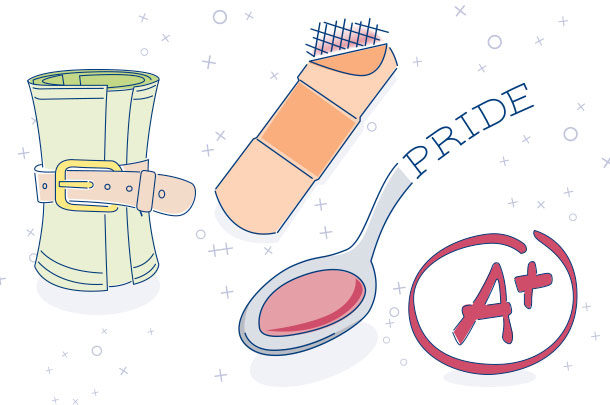In any industry, we often hear of the three tiers. The top tier is successful, thriving businesses positioned for sustainable futures, while the bottom tier is the struggling businesses that will likely not exist five years from now. In between lies businesses that could go either way.
Which tier do you want to be in today? Five years from now? Securing a position in the top tier is not a matter of milk price. It is about making the best decisions with the knowledge you have right now. And that means even when there are a few more dollars added to the milk check, you stay focused on the long-term goal.
Here are four things dairies need to do to move their businesses forward in 2020:

Illustration by Corey Lewis.
1. Swallow your pride.
With many dairies I work with, there is a strong sense of pride and legacy. But sometimes pride can get in the way of asking for help. It can be difficult to come to terms with the true financial position of your dairy and even harder to admit where things stand. Which option sounds better to you: Having an honest conversation with your family and banker about how you can make changes to get back in the black, or an order from your lender requiring foreclosure? The latter scenario is not an exaggeration. It is happening on dairies every single day. Don’t let it get that far. Make the calls you need to make right now to get the help you need, whether it is having someone come in to work through cash flows or step in for the day-to-day management.
I firmly believe there is always a way to make a dairy have cash flow, but it absolutely requires doing things differently. Open your mind to changing how things have been done in the past. After all, how far has the “way we’ve always done it” gotten you? Will your current practices be sustainable in the future? Will they get you to the top tier?

Illustration by Corey Lewis.
2. Keep your belt tight.
That fatter milk check is going to feel good, but don’t let it make you lose focus. Now is the time to pay down debt. Put money towards an operating loan or start stashing a nest egg for the next downturn. Be prepared for the unforeseen, like this past year’s weather and cropping challenges. Forego equipment and land purchases if you can.
Keep expenses in check. Continue to go through each line item in the budget and determine where costs can be reduced. Vendors may be knocking, trying to get a foot back in the door with products or services you cut back on last year. Before letting them in, make the decision based on the financial impact it will have on your dairy’s bottom line. It’s not worth going backwards over a free stocking cap.

Illustration by Corey Lewis.
3. Rip off the band-aids.
Not every item on your expense list is necessary. Some may simply be band-aids you’ve been afraid to pull off. Most commonly, I see expensive vaccination programs and feed ingredients fall into this category. While vaccines for problems like salmonella and clostridia are effective ways to prevent disease, there is a less expensive method that works just as well and doesn’t require a needle: cleanliness. I’ve seen dairies get meticulous on cleaning and remove such protocols without a problem. Same goes for feed ingredients, such as binders. Often, the product is picking up the slack for poor management. Problems with feed spoilage can often be corrected with better bunk face management and managing feed delivery and pushups more intently.

Illustration by Corey Lewis.
4. Bring your “A” game.
Gone are the days of plants and cooperatives going around looking for more milk. You must differentiate yourself amid an inundated commodity market by “marketing” yourself, your dairy and the milk you are producing. Plants want high quality and low somatic cell count, often seeking 4.0 fat and 3.2 protein, and combined fat of 7 pounds. Find out what the plants in your area are looking for and make the milk they desire.
When I make calls to plants to get dairies added to their waiting lists, they are concerned with not only quality and components but also with the dairy’s track record. Have there been instances of antibiotics in the milk or residues in meat from the dairy? What condition are the cattle in? How are they being housed and cared for? They want dairies that look clean on the outside and run a tidy operation on the inside. Anything less puts you at risk of being dropped or losing a contract.
Use 2020 as a year to get ahead. Grow your business in its ability to compete by being open-minded and staying focused on where it is you want to go. This isn’t a game of the strongest survive. In the end, the top tier will be those who are willing to change.










